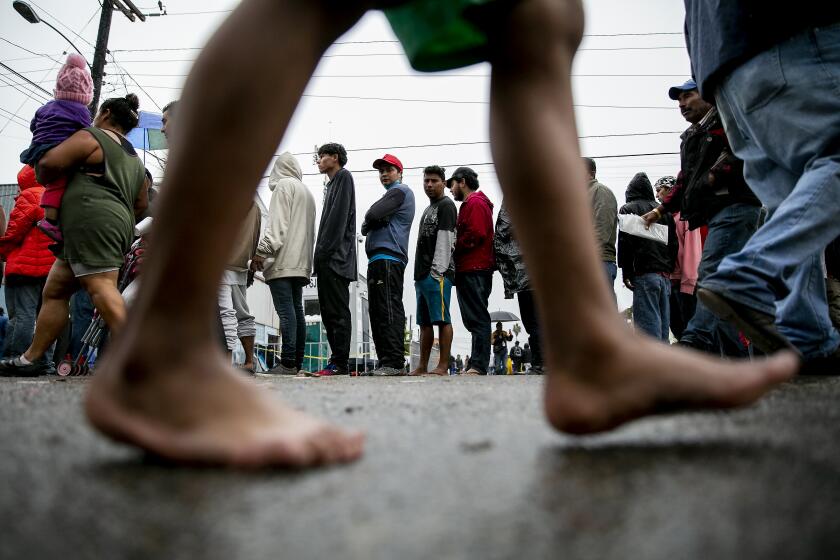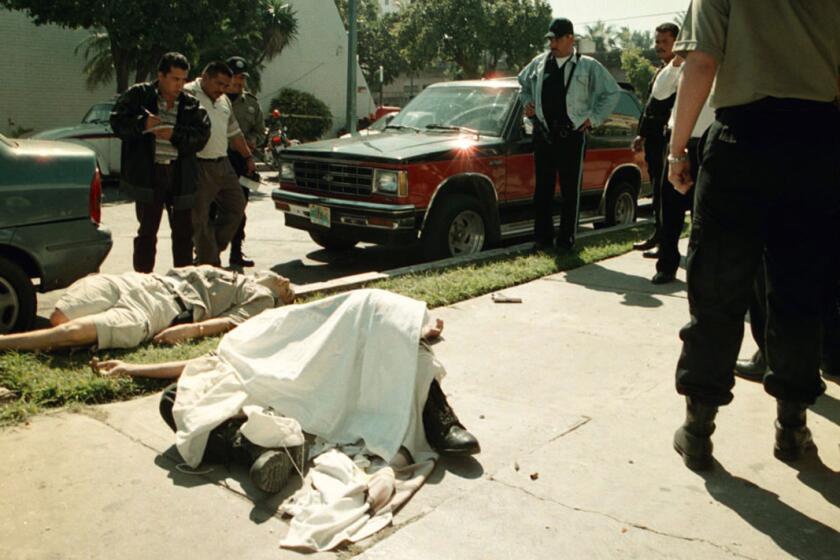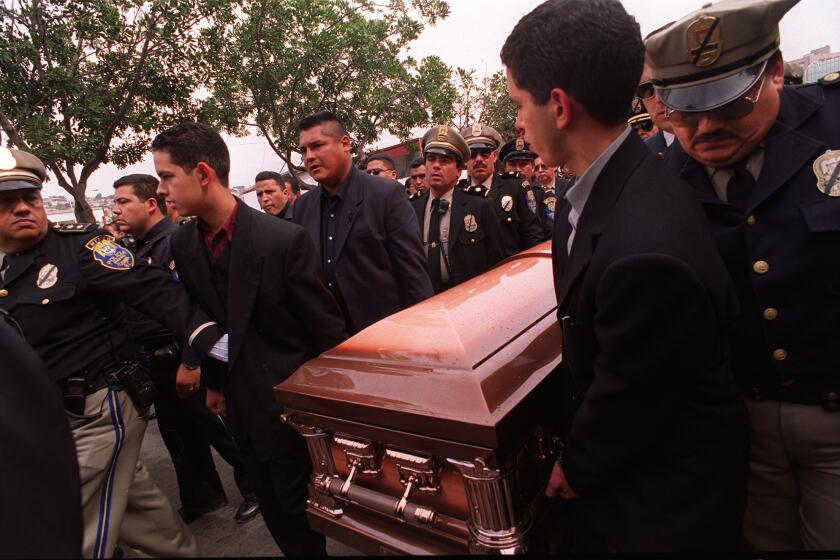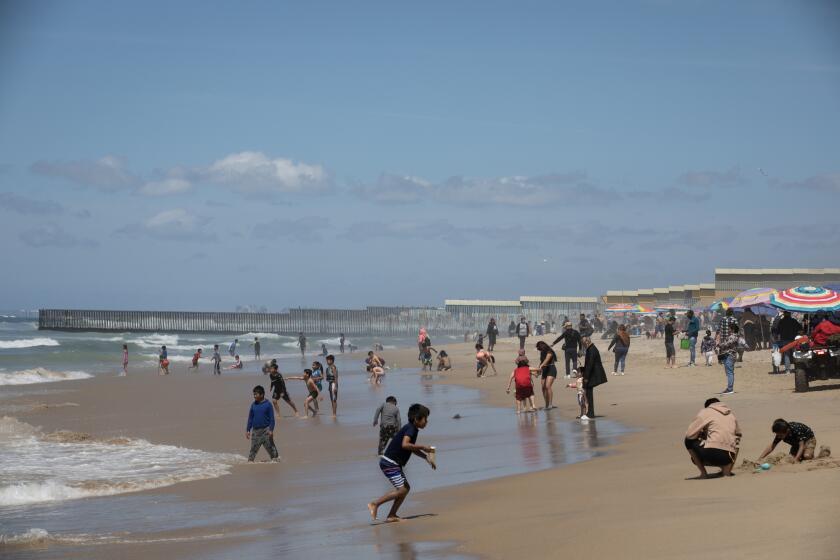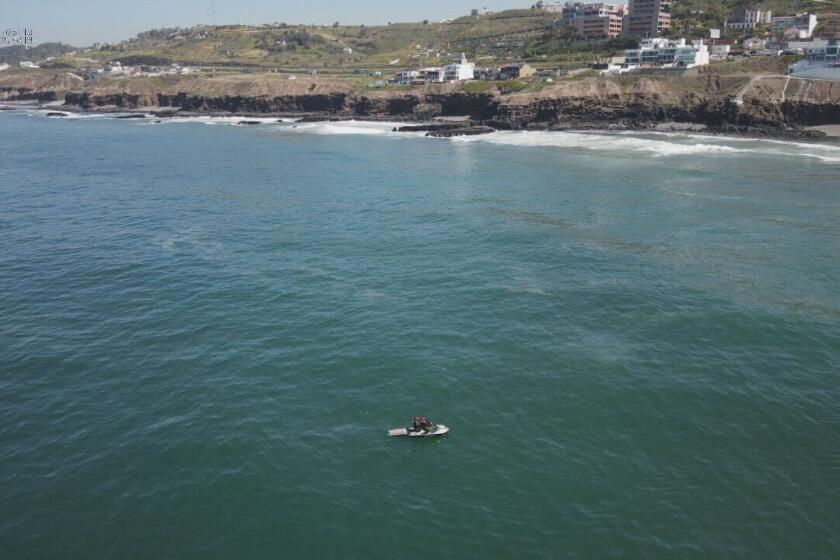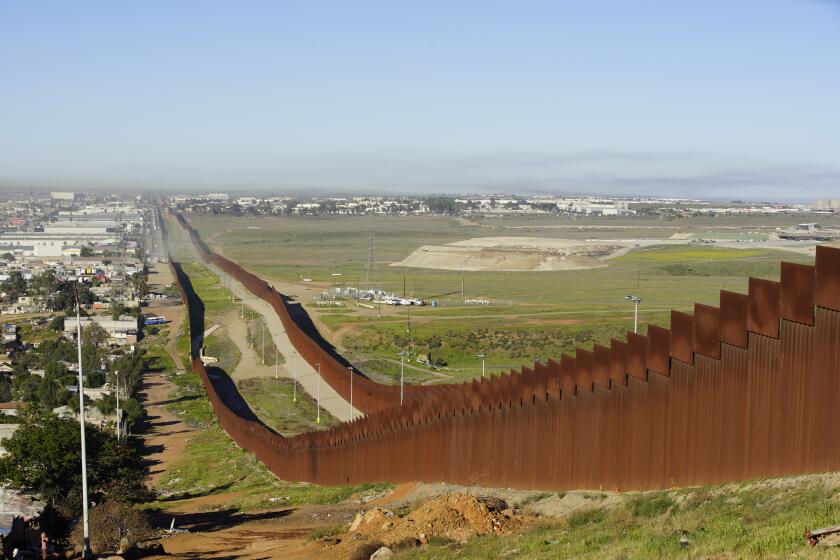Endangered vaquita porpoise dies in captivity; operation under review
A vaquita porpoise captured by an international group of scientists attempting to save the species from extinction has died, prompting a review of the operation launched last month in Mexico’s Upper Gulf of California.
“The entire rescue team is heartbroken by this devastating loss,” read a statement sent Sunday by VaquitaCPR (Vaquita Conservation, Protection and Recovery), the name of the operation led by Mexico’s Environmental Ministry in coordination with the San Diego-based National Marine Mammal Foundation and other organizations.
With fewer than 30 vaquita believed to be alive, the animal’s death is a blow to an intricately planned — and admittedly risky — effort to save the species by attempting for the first time to capture the animals alive and remove them from the wild. The operation was launched in mid-October off the coast of San Felipe in Baja California, enlisting some of the world’s top marine mammal experts.
The statement said the dead vaquita had been captured late Saturday afternoon, and described the animal as a mature female who was not pregnant or lactating. The animal had been transported to a floating sea pen off the coast of San Felipe, and placed under observation “and constant care for its health and safety,” the statement said
Marine mammal veterinarians “noticed the animal’s condition began to deteriorate and made the determination to release,” the statement said. However, “the release was unsuccessful and life-saving measures were administered.”
The news of the vaquita’s death came just hours after an upbeat announcement by Mexico’s environmental secretary, Rafael Pacchiano, immediately following the animal’s capture.
“It is a great achievement that fills us with hope,” Pacchiano said in a tweet.
The secretary said in a subsequent tweet on Sunday afternoon announcing the animal’s death that “we remain committed to saving the vaquita from extinction.”
This was the second vaquita captured since the effort began in mid-October. A female calf about six months old was quickly released when it showed signs of stress after its capture on Oct. 18.
VaquitaCPR is seen as a measure of last resort to save the vaquita, a small and shy porpoise that only lives in the Upper Gulf of California. Its population has been in a steep decline in recent years as the animals have been caught in illicit nets used to catch another endangered species that is endemic to the region, the giant totoaba fish. The totoaba’s swim bladders are in high demand in Asia, where some believe in their curative powers.
Despite Mexican government efforts to curb the illegal totoaba fishing, the practice has continued, and vaquita have continued to drown. The aim of VaquitaCPR has been to remove the animals from their habitat and keep them in protected enclosures for breeding in captivity to rebuild the population. The vision has been to release them back into the wild once the illegal fishing is brought under control.
“The risk of losing a vaquita during field operations was always acknowledged as a possibility, but it was determined that it was unacceptable to stand by and watch the vaquita porpoise disappear without a heroic attempt at rescue,” the VaquitaCPR statement read.
Even as they launched the rescue effort last month, the scientists acknowledged they had many uncertainties as to how this would play out. “As a vet, I’m terrified of an animal dying in a net in this operation,” said Frances Gulland, interviewed in San Felipe last month. The expedition’s lead veterinarian, she is a senior scientist with the Marine Mammal Center in Sausalito and a member of the U.S. Marine Mammal Commission.
The events leading up to the vaquita’s death are now under review by VaquitaCPR scientists “in collaboration with an independent review panel established for this purpose,” the statement said. “A necropsy has been performed and tissue samples have been collected to inform this review.”
Pacchiano, the environmental minister, said in a tweet that “we are waiting for results of the necropsy and of the technical recommendation by the International Committee for the Recovery of the Vaquita,” an international group of scientists that has been advising the Mexican government.
Since its inception, VaquitaCPR has been under the spotlight of the international environmental community. Some groups such as the Sea Shepherd Conservation Society have been critical of the capture plan, saying the focus should be on making the Upper Gulf safe for vaquita.
But the operation has also won international backing. Along with the National Marine Mammal Foundation, the Marine Mammal Center and Chicago Zoological Society have offered critical support. Other U.S. collaborators have included Duke University, the National Oceanic and Atmospheric Administration and the U.S. Navy’s Point Loma-based Marine Mammal Program.
PREVIOUS

For the next month, biologists, veterinarians, technicians and four female U.S. Navy bottle-nose dolphins from San Diego are slated to participate in this expedition aimed at locating Mexico’s few remaining vaquita porpoises. Dubbed Vaquita CPR (Con
sandra.dibble@sduniontribune.com
Get Essential San Diego, weekday mornings
Get top headlines from the Union-Tribune in your inbox weekday mornings, including top news, local, sports, business, entertainment and opinion.
You may occasionally receive promotional content from the San Diego Union-Tribune.

